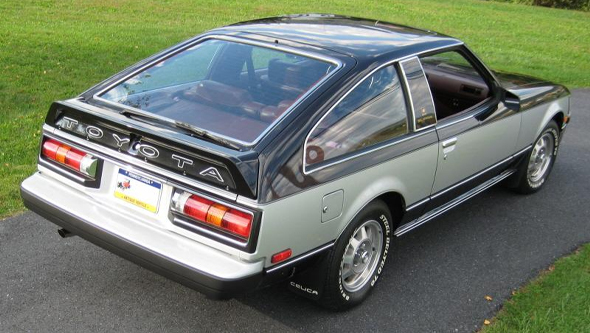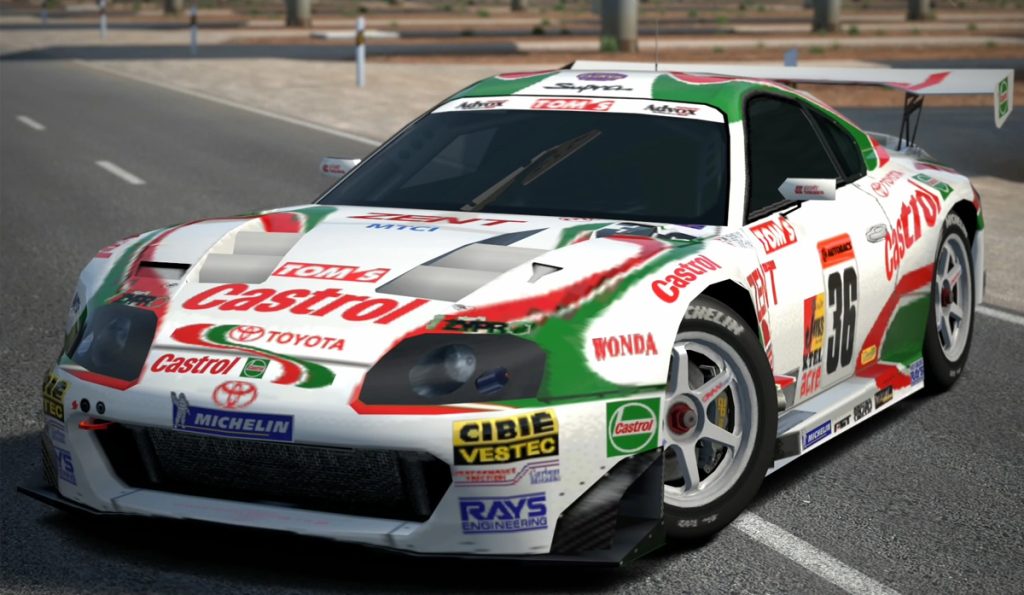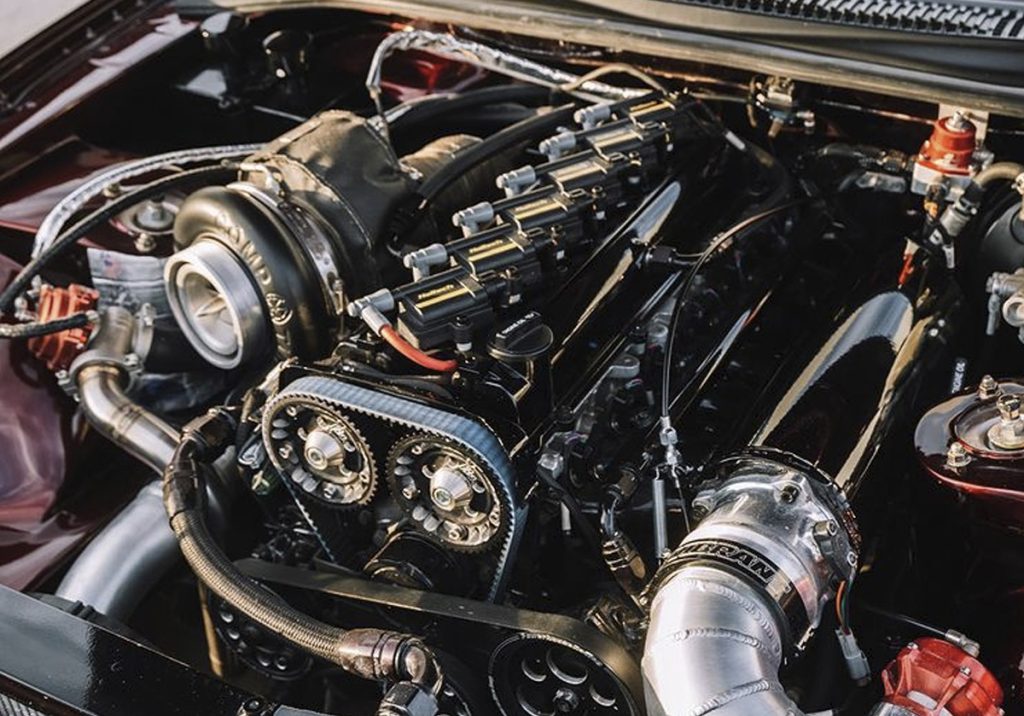International Customers:
Click Here | Contact Us

Toyota has given much to the world in its devotion to automotive engineering, but few items have made as big of an impact as the JZ engine platform. Today we dive into the Japanese inline-six world and see what’s so special about the Toyota 2JZ.
The company started its life as Toyoda (spelled with a D – as it was named after its founder Sakichi Toyoda Automatic Loom Works, so they were actually manufacturing looms and sewing machines for the textile industry! That part of the business is still running to this day. The automotive part, the one that we’re interested in, didn’t kick off until the early 1930s.
The company changed its name to Toyota (with a T) in 1936. There are many theories as to why that happened but the most commonly cited one is that in Japanese, “D” is a voiceless consonant, which, apparently is not very pleasing to the ear. So it was changed to a T which according to the experts sounds “stronger” and “more pronounced”.
TOYOTA CROWN
Toyota began selling their first “export” vehicle in 1956 through their newly established worldwide dealer chain called “Toyopet”. That car was the Toyota Crown. Since then Toyota has grown in size and reach, surpassing GM in 2008 to become the world’s largest car manufacturer. A title it still holds to this day

.
CELICA SUPRA
Let’s turn our attention to the subject of this article and arguably Toyota’s best ever engine – the mighty 2JZ. But before we get all nitty-gritty about this famous inline-six we really should quickly talk about the hero car it powered – The Supra.
So let’s step back in time again to the 1970s. Toyota’s direct-competitor Nissan was seeing major success with its Z platform. Toyota’s own sports car – the 2000GT had been popular, but due to its limited production, it did not return a profit.
Needing to pivot quickly, the Toyota engineers stretched their existing Celica platform by nearly 130mm and elongated the engine bay to house the M series inline-six. Dubbed the Celica “Supra” (Latin for go-beyond), this would be the first of five generations of the Toyota Supra.


JZ PLATFORM
The M-series engine went on to power three generations of Supras, but by the late 80s it was getting a bit long in the tooth, so Toyota devoted its efforts to developing a new inline-six platform. The new motor was a 24 valve, dual overhead unit, dubbed the 1JZ. It was first used in 1990 in the Supra Mark III and Crown. While it was adequate, Toyota quickly saw a need for a larger displacement JZ engine, and with reliability in mind, they created a new, taller 3.0L design.
The 2JZ that went into the 1991 Aristo was a tall-deck JZ engine that featured a shared bore and stroke, making the engine squared. Two versions of the 2JZ were made; the naturally aspirated 2JZ-GE and the more popular twin-turbocharged 2JZ-GTE. The latter, twin-turbo version finally gave Toyota an engine that could take on Nissan’s RB26 head-on.


2JZ NO SHIT?
Here is where things get a little odd for the 2JZ. Production variants of the fourth-generation Supra were made with both the turbo and non-turbo variants, but Toyota never officially campaigned a 2ZJ in any form of motorsport. Why?
Well, Toyota invested a considerable amount of money, time, and resources in developing an engine for their WRC effort. And since the Japanese Touring Car rules allowed any production engine to be used in their cars, Toyota opted to power their JTC Supras with the 3S-GT powerplant used in their successful WRC Celicas.
Remember the Tom’s Supra that was immortalized in Gran Turismo? Yep, that never had a 2JZ. What about the HKS Drag Supra? Well the MKIII ran a 7M, and the MKIV used a UZ-based V8.
It wasn’t until a few years into the Mark Four Supra production run that privateers began campaigning and developing the 2JZ platform. Notably, the Blitz Tuning Supra tackled the Nurburgring modified production car record and claimed the title in 1997 with their impressive 7-minute 49-second run.
But no one could have expected that a street racing film from America, would make the MKIV Supra and the 2JZ one of the most popular engines in the world. Jokes aside, this film and the explosion of drifting as motorsport helped grow the aftermarket into what we know today.
But no one could have expected that a street racing film from America, would make the MKIV Supra and the 2JZ one of the most popular engines in the world. Jokes aside, this film and the explosion of drifting as motorsport helped grow the aftermarket into what we know today.



WHICH ONE TO GET?
The 2JZ as mentioned came in two variants, the naturally aspirated GE powered the MKIV Supra, Aristo, Crown, Chaser, and Soarer chassis respectively. It uses sequential fuel injection, with an aluminium head using four valves per cylinder. It also used a DIS ignition system, but it did not use a coil on plug setup but rather used a coil for every two cylinders. In 1997, they were upgraded to variable valve timing and remained that way through the end of production.
The GTE model was a direct competitor to the popular Nissan RB26DETT, featuring an air-intercooled, twin-turbocharged induction system. The block, crankshaft, and connecting rods are shared with the GE, however, a new high-flowing aluminium cylinder head was developed alongside new, larger valves and higher duration camshafts.
The biggest difference aside from the cylinder head are the oil spray nozzles installed to help lubricate the engine under the increased load. This and the shorter piston to lower compression ratio makes them a much more desirable option for the average enthusiast. Again, like the GE, variable valve timing was added in 1997.
MODDING AND TUNING THE 2JZ
While the 3.0L inline makes respectable power in stock form, many owners seek out more power by replacing the factory turbochargers. Ditching the restrictive factory exhaust manifold and turbocharger (usually in favour of a larger single setup) can easily bump up the power output. Whether or not you choose to try and modify the stock ECU is up to you, but considering we have been in the engine management business for nearly 40 years, we would highly recommend ditching that old, archaic system.
At Haltech, we have developed a complete replacement engine harness that suits our Elite 2500 ECUs. If you’re looking for something simpler, we even offer a plug and play adapter for the MKIV Supra that uses your existing wire loom and installs a new Elite 2500 ECU. This plug-and-play adapter is a great alternative for light or heavily modified cars that are not using variable valve timing.




THINGS TO WATCH OUT FOR
The valve guide seals are known to fail pretty early on, but there are aftermarket options to help remedy that. Look for smoke out of the exhaust on startup, that’s usually a good indicator. If you’re considering a VVT model, look for sludge in the valve covers, this will be especially bad if the VVTi cam gear is leaking. Another potential issue would be sludge or oil debris clogging the VVT solenoid (oil control valve) screen.
All in all, these 2JZ engines, if pulled from a wrecker with good service history, should be a great option to swap into your project car.






Leave a comment